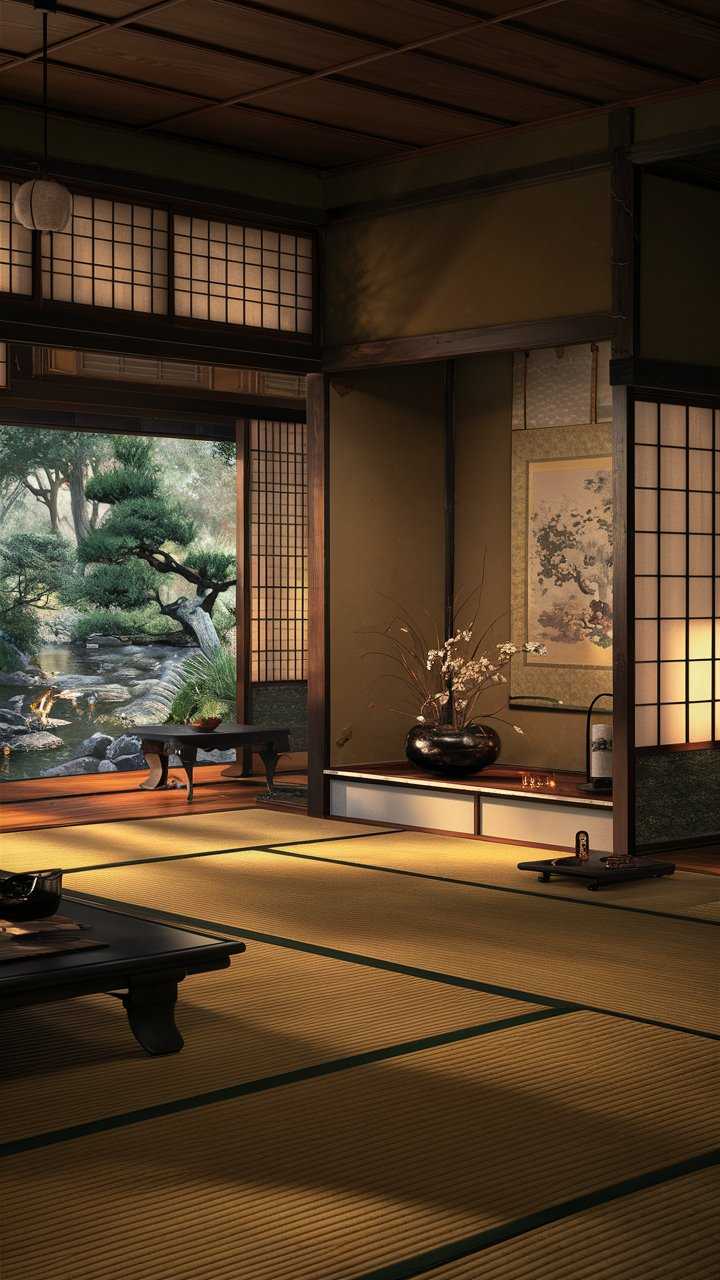Cozy Japanese Living Room Decor Ideas for Your Home
Turning your living area into a cozy Japanese retreat can make it warm and calming. Japanese decor focuses on peace, simplicity, and nature’s beauty. It’s perfect for those who love modern decor and a peaceful space. By using Japanese design elements, you can mix comfort with elegance.
Pinterest shows that simple, well-thought-out decor can greatly improve your home’s feel. Here are some easy ways to refresh your living room with Japanese style.
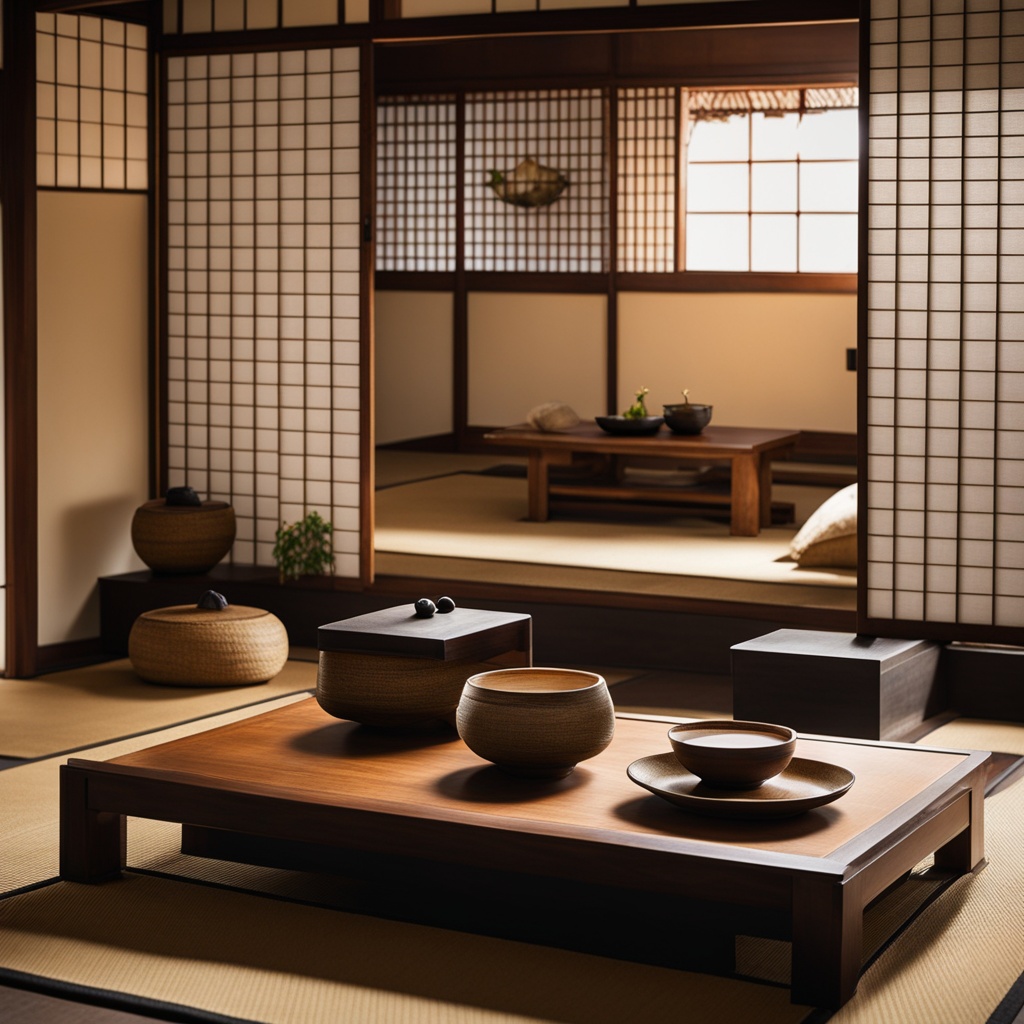
Key Takeaways
- Embrace minimalism to create a calming atmosphere.
- Utilize natural materials for authenticity.
- Incorporate indoor plants to enhance serenity.
- Choose low furniture to foster a cozy feel.
- Use light elements for a soothing environment.
- Add calligraphy art for cultural depth.
Understanding Japanese Interior Design Principles
Japanese interior design values simplicity, light, and the beauty of imperfection. It focuses on minimalist design, making spaces functional yet serene. Comfort and beauty come together, creating a peaceful home filled with natural elements.
Embracing Minimalism
Minimalism is key in Japanese design, promoting a life free from clutter. This clean space helps clear the mind and focus better. Only the most important furniture and decor add to the calmness.
The Role of Natural Light
Natural light is vital in Japanese design, making spaces feel peaceful. Big windows and open layouts connect us with nature. This mix of light and space brings warmth, making us feel closer to our surroundings.
Key Elements of Wabi-Sabi
The wabi-sabi style loves the beauty of imperfection. It uses materials like wood and stone for their unique looks and feel. These elements add to the calmness of Japanese interiors, showing us that beauty is simple and comes from nature.
| Design Principle | Description |
|---|---|
| Minimalism | Focusing on essential items to create clarity and peace within the space. |
| Natural Light | Enhancing the ambiance through open layouts and ample sunlight. |
| Wabi-Sabi | Embracing the beauty of imperfection and the use of natural materials. |
The Importance of Natural Materials
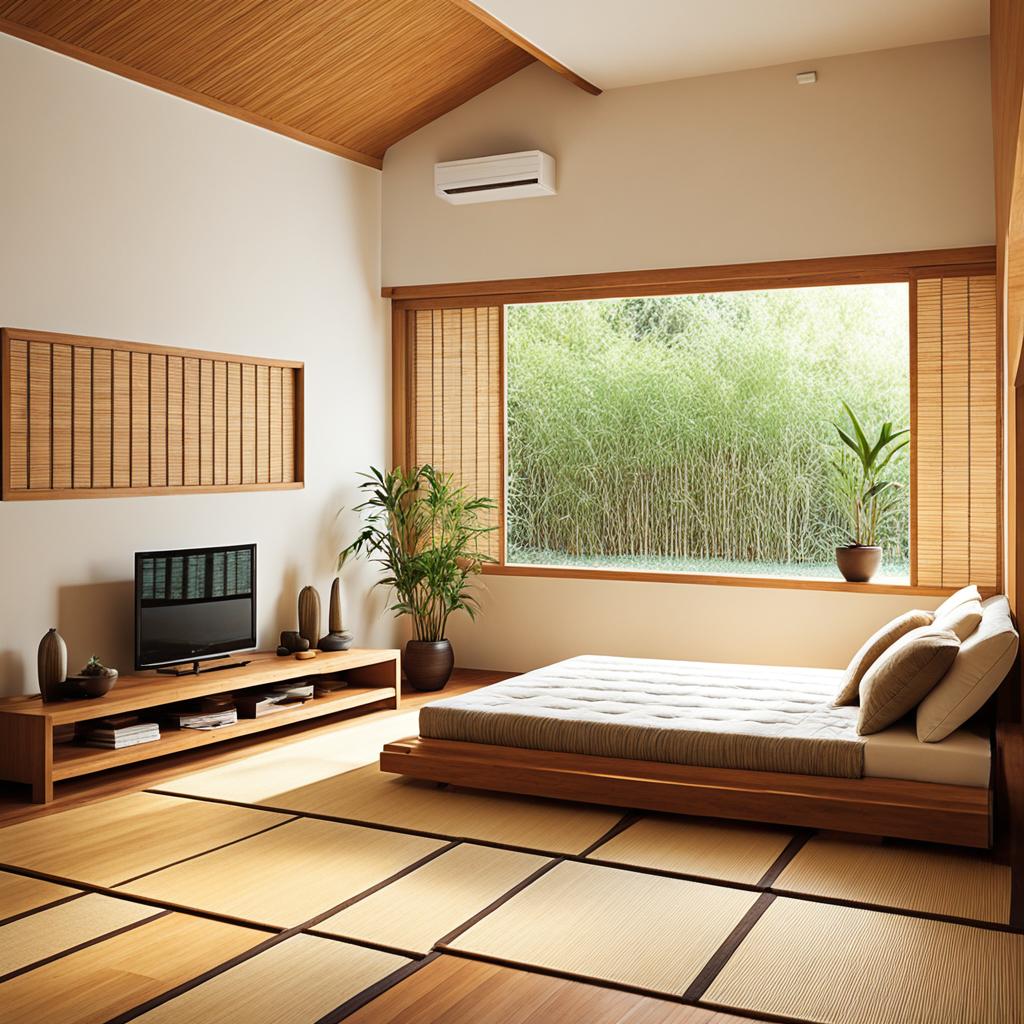
Using natural materials in a Japanese living room makes it welcoming and true to the culture. Wood and bamboo are key for this look. They bring warmth and a sense of sustainability. Wooden decor adds charm, and bamboo brings an organic feel that matches traditional styles.
Choosing Wooden and Bamboo Elements
Wooden furniture adds warmth to any living space. Choosing pieces from sustainable sources boosts the room’s look and shows care for the planet. In Japanese homes, you’ll often find:
- Low wooden tables
- Bookshelves made from natural wood
- Bamboo accents, such as picture frames or decorative items
Bamboo is prized for its strength and flexibility. Using it in various decor items connects us to nature. It also keeps the space feeling light and open.
Incorporating Tatami Mats and Natural Rugs
Tatami mats are key in Japanese rooms, offering comfort and a sense of grounding. These straw mats are practical and keep the room feeling authentic. Adding natural rugs like jute or wool rugs adds to the organic vibe. Tatami and natural rugs together create a balanced look in texture and style.
Creating a Zen Atmosphere
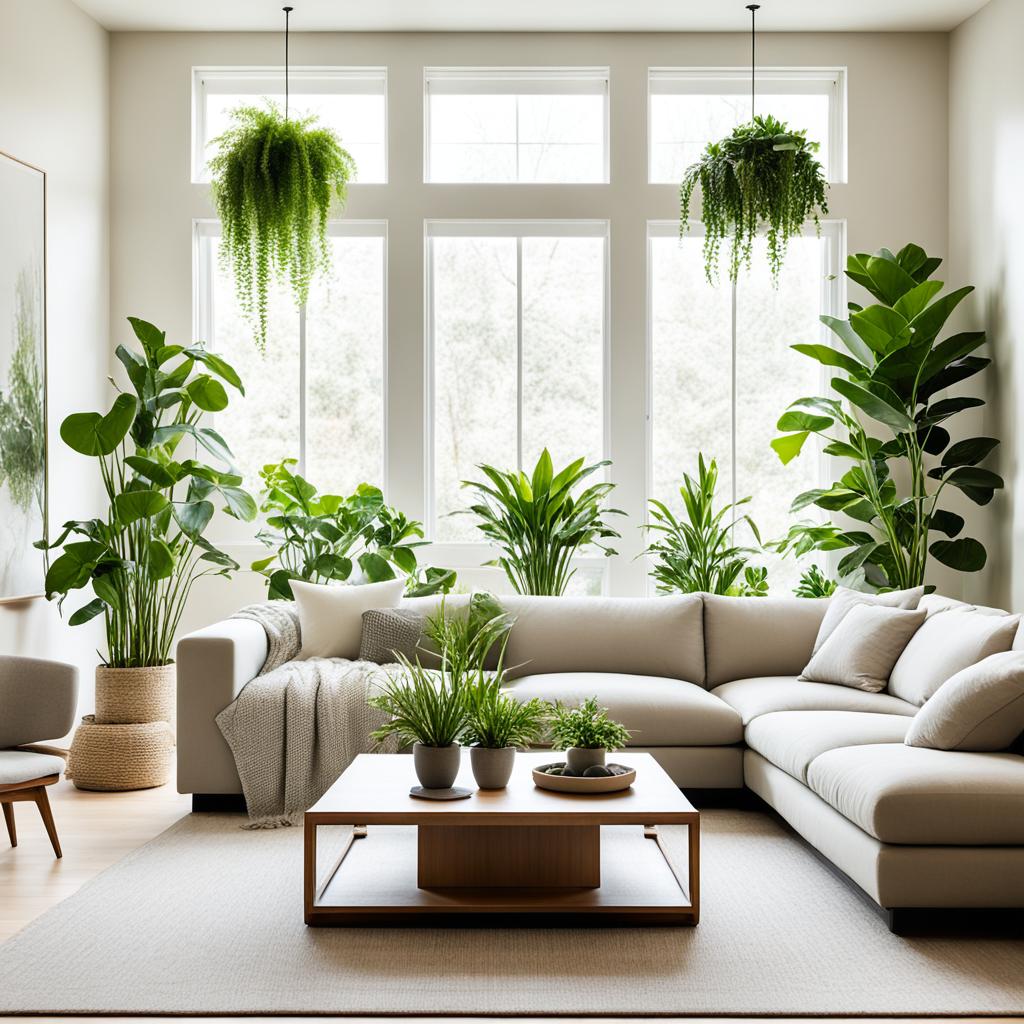
To make your living room feel zen, mix elements and colors thoughtfully. Indoor plants, like bonsai trees, are key to this calm vibe. These small trees add beauty and symbolize peace. Pair them with a neutral color scheme for a soothing space.
Utilizing Indoor Plants Like Bonsai Trees
Bonsai trees are more than just decorations; they represent a care for nature. Adding these plants can make your space look better. Their detailed shapes and calming look make a great centerpiece.
Other plants can also add to the natural feel, clean the air, and make you feel better.
Choosing a Neutral Color Palette
A neutral color scheme is vital for a peaceful space. Using white, brown, and soft green creates a calm background for plants. These colors bring in light and openness, perfect for zen decor.
By picking the right colors and furniture, you can make a space that’s relaxing and peaceful.
Japanese Living Room Decor: Key Furniture Choices
Choosing furniture for a Japanese living room means picking pieces that are both comfy and useful. Low furniture helps make the room feel more relaxed, making it easy to move around and giving the illusion of more space. Modular designs also add flexibility, making it easy to change the layout for different needs. This fits well with the Japanese idea of simplicity and usefulness.
Low Furniture for a Cozy Feel
Low furniture is key in Japanese design, making the room feel warm and welcoming. It supports a casual, social atmosphere, great for spending time with loved ones. Some examples of low furniture include:
- Floor cushions (zabuton) for casual seating.
- Low-profile coffee tables that facilitate conversation.
- Futons for comfortable lounging or sleeping.
Innovative Modular Designs
Modular designs bring flexibility to living spaces. They make the most of space by allowing different setups for various needs. This is especially useful in Japanese homes, where space is often tight. Key features of modular designs include:
- Stackable storage solutions that save space.
- Transformable seating arrangements, such as sofa beds.
- Multi-functional furniture, like ottomans with hidden storage.
| Furniture Type | Benefits |
|---|---|
| Low Tables | Encourages informal gatherings and relaxation. |
| Floor Cushions | Provides comfort and can be easily moved. |
| Modular Sofas | Adapts to different room configurations. |
| Storage Ottomans | Combines seating with functional storage. |
Using these elements brings Japanese principles into modern living. The focus on low furniture and modular designs improves comfort and practicality. It makes living easier and more enjoyable.
Adding Elegant Shoji Screens
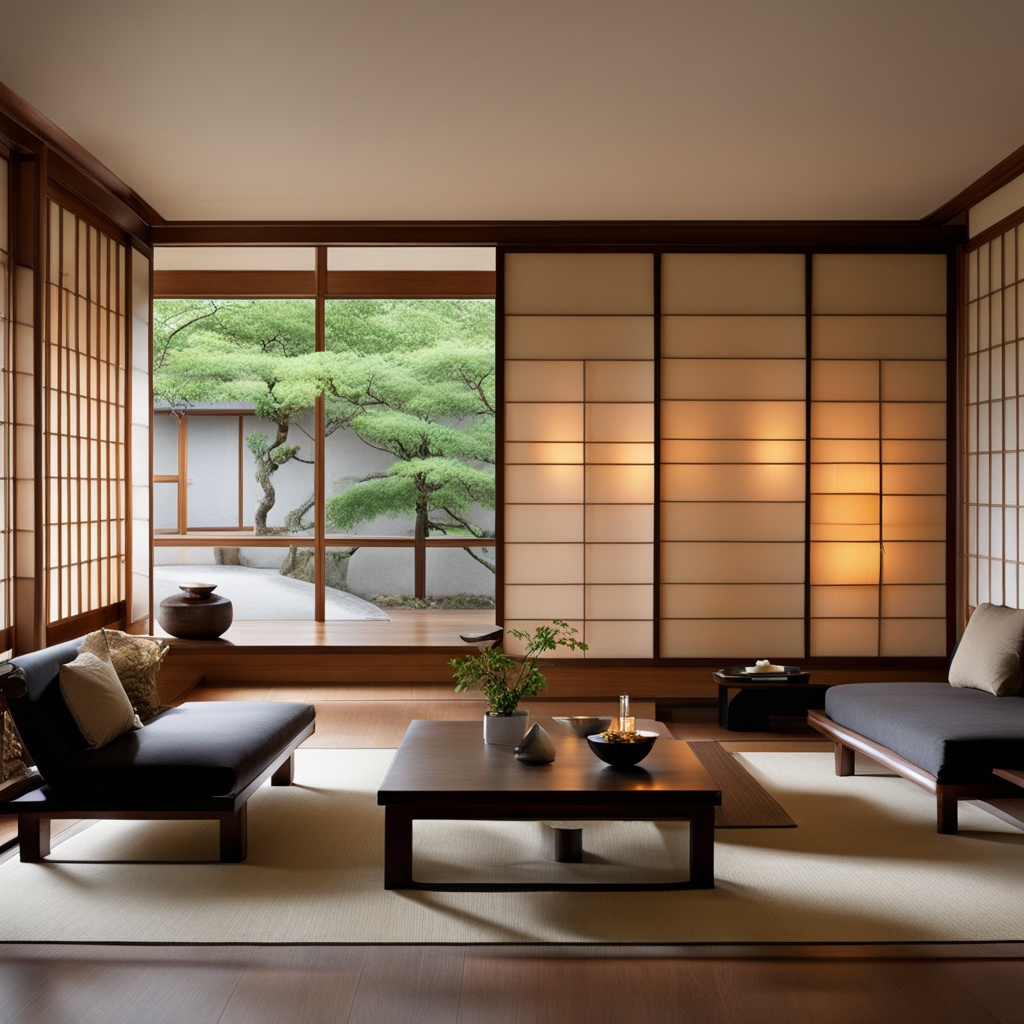
Shoji screens are a big part of Japanese interior design. They are loved for their beauty and usefulness. These screens work as both beautiful decorations and flexible sliding doors. They make living spaces look elegant and simple.
The Functionality of Sliding Doors
Shoji screens can be used as sliding doors. They are perfect for making room layouts flexible. They are light, so moving them around is easy, which is great for small homes. When closed, they keep things private but still let in natural light.
Decorative Uses of Shoji Screens
Shoji screens are more than just useful; they’re also beautiful. The way light filters through the rice paper makes a room feel calm. You can pick from many designs, like simple patterns or flowers, to match your style. For ideas, look at floral watercolor wallpaper that goes well with shoji screens.
Incorporating Ikebana Flower Arrangements
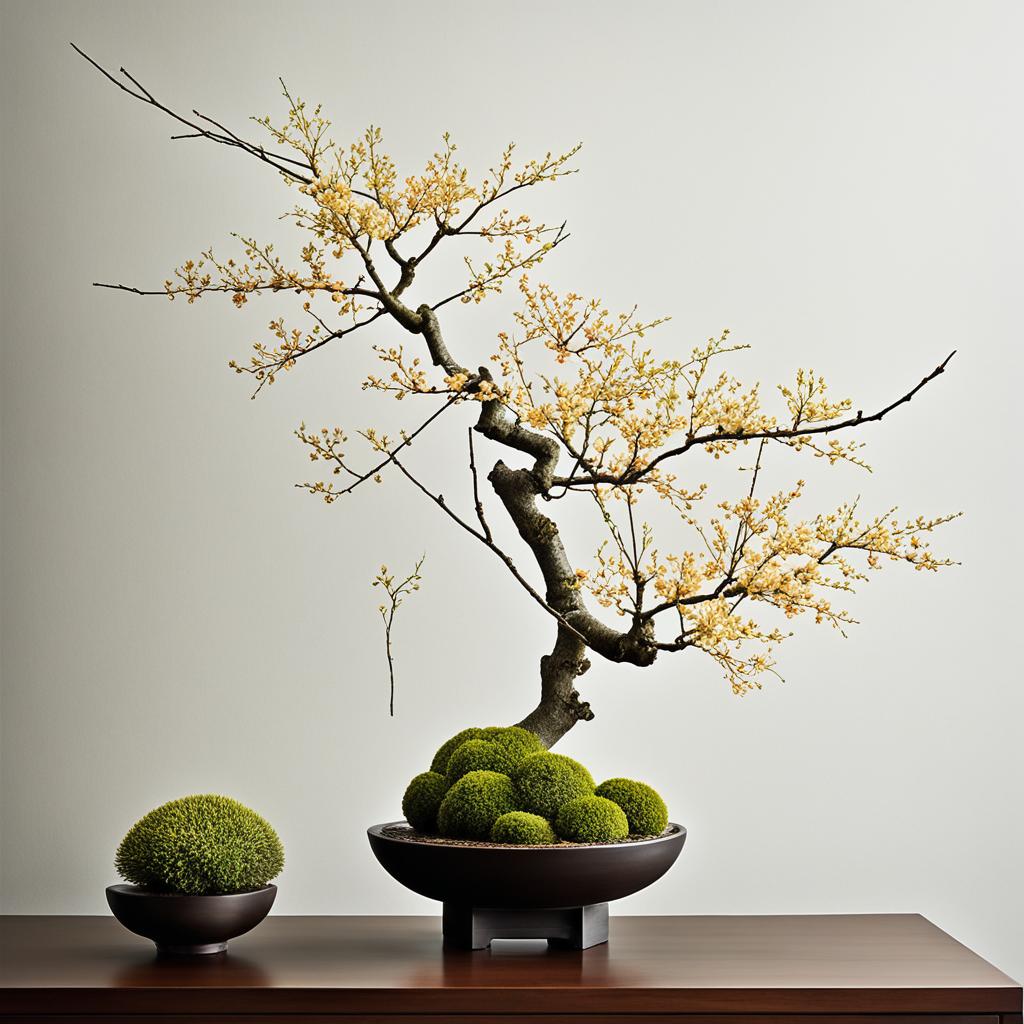
Ikebana is the elegant art of Japanese flower arranging. It focuses on minimalism and balance. This traditional practice makes simple yet striking designs that bring life to a room. By choosing the right flowers and arranging them thoughtfully, you can create a serene ambiance. This adds a graceful touch to any Japanese living room decor.
Bringing Life with Simple Floral Designs
When making an ikebana arrangement, simplicity is crucial. A few stems of sturdy blooms can say a lot without taking up too much space. The focus is on the empty space around the flowers, making each stem stand out. Common flowers used include:
- Cherry blossoms
- Bamboo
- Chrysanthemums
These flowers not only look beautiful but also reflect the season they are in. This creates a peaceful visual experience.
Choosing the Right Vases for Ikebana
Choosing the right Japanese vases is key to showing off ikebana’s beauty. The vase should match the flowers, making the arrangement look even better. Here are some vase types to consider:
| Type of Vase | Characteristics | Best For |
|---|---|---|
| Moribana | Shallow and wide, often with low heights | Modern and casual arrangements |
| Nageire | Tall and narrow | Vertical flower arrangements |
| Ikebana Containers | Variety of shapes, often ceramic or porcelain | Traditional, formal flower displays |
Choosing the right vase can make the floral design stand out. It creates harmony in the space and highlights the beauty of ikebana.
Utilizing Calligraphy Wall Art
In Japanese decor, calligraphy wall art is very important. It can make your space look better. By choosing quotes that mean something, you make your space more beautiful and inspiring. These quotes often talk about values like harmony, simplicity, and being thankful, which are key in Japanese culture.
Choosing Meaningful Quotes
When picking quotes for calligraphy wall art, look for ones that bring peace and purpose. The right quote can touch everyone who sees it. Here are some tips for finding great phrases:
- Focus on brevity: Short quotes have a bigger impact.
- Cultural resonance: Pick quotes that match Japanese culture and values.
- Personal significance: Choose phrases that mean something to you or your family.
Placement for Maximum Impact
Where you put your calligraphy wall art can really make a difference. Here are some tips for placing it well:
- Eye level: Hang the art at eye level for easy reading and looking.
- Complementary surroundings: Put your art near things that match its design or colors.
- Grouping: Use a gallery wall with several pieces for a nice look.
Adding calligraphy wall art with meaningful quotes can make your decor better. This thoughtful choice can turn your living space into a deeper reflection of your values and cultural love.
Creating a Cozy Seating Area
Designing a cozy seating area is key for a Japanese-inspired living room. It’s about making a space that invites relaxation and keeps things simple. Choosing the right cushions and throws is very important for this look. Floor seating adds a personal touch, staying true to minimalism.
Choosing the Right Cushions and Throws
For a cozy spot, go for natural fabrics like cotton or linen in soft colors. The cushions and throws should match the calm colors of nature, like gentle greens, earthy browns, or soft beiges. Mixing different textures makes the space look interesting. Layering cushions makes it feel snug, perfect for relaxing.
Floor Seating Options
Floor seating makes the living room feel more intimate, bringing people closer together. Think about using floor cushions, or zaisu, for comfort without the size of regular chairs. Low benches or tatami mats are great too, letting everyone sit close for chats. This setup captures the essence of Japanese design, focusing on connection and simplicity.
Incorporating Light Elements for a Calm Space
Creating a peaceful living room depends a lot on smart lighting. Soft lighting is key to making a space calm and relaxing. It turns the area into a place where you can relax and enjoy quiet moments.
Using Soft, Layered Lighting Solutions
Soft, layered lighting is crucial for a peaceful feel. Think about adding different lighting types, like:
- Lamps with paper shades that spread light softly
- Dimmable lights for changing the mood
- Accent lights to spotlight art or plants
These lights together create a warm, cozy glow. This makes your calm space even more inviting.
Natural Light Amplification Techniques
Using more natural light is also important for a peaceful living area. Try these tips:
- Strategically placing mirrors to bounce light around
- Choosing sheer curtains for sunlight to filter through
- Utilizing light-colored furnishings to brighten the room
These methods help mix natural and soft lighting. This makes your living room even more serene.
Conclusion
Embracing cozy Japanese living room decor can turn your home into a peaceful oasis. It promotes tranquility by focusing on minimalism and natural materials. This approach makes your space reflect modern Japanese style while offering comfort and relaxation.
Choosing the right furniture and adding plants brings an inviting feel. These elements, along with elegant decor, create a peaceful atmosphere. This is key in our busy lives today.
When exploring Japanese design, remember every detail is important for a harmonious space. By blending functionality with beauty, you can make a cozy retreat. This retreat captures the tranquility of Japanese culture.

